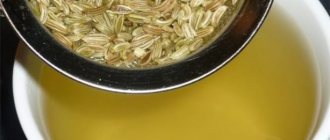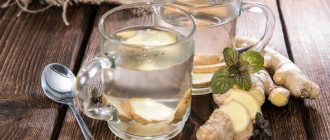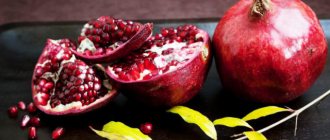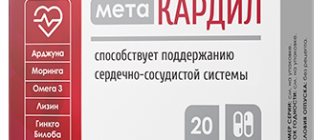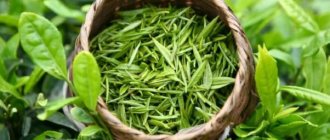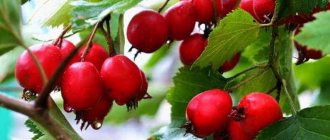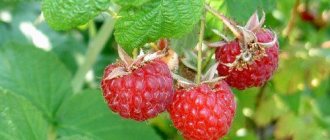There is probably no person who does not know this plant. Mint is used in cosmetics, cooking, perfumery, medicine and other fields. The main active component contained in its tissues is menthol, which is included in medications.
This article will discuss whether there is a connection between blood pressure and mint, and how hypertensive patients should use it to benefit their health.
Young peppermint leaves
Effect on pressure
Menthol contained in peppermint leaves has antiduncillary properties: dilates blood vessels, reduces the strength and speed of blood flow, which lowers blood pressure and reduces the risk of coronary heart disease and other internal organs.
The plant is part of the drugs (Validol, Valocordin, Zelenic drops) used for diseases that are accompanied by shrinkage of coronary vessels and smooth muscles.
In addition to its antuscathular action, mint has a calming effect. Recommended for use for nervous hypertension, stress, problems falling asleep:
- He removes the SPEAKY command;
- eliminates symptoms of hypertension;
- calms, reduces heart rate, which reduces the risk of heart attack and stroke;
- Improves the condition in Tachakardia, painful Dusznica, neuralgia.
People with hypertension cannot take plant-based, use essential oil. Dilation of blood vessels at low pressure will only make things worse.
Varieties of mint
Not all types of mint have medicinal properties, among which there are more than 10 hybrids and 25 varieties.
The most famous and used by folk healers is peppermint, which was developed by the British by crossing wild species of this plant. It contains a high percentage of essential oils. The serrated leaves of the herbaceous plant are collected before flowering, in dry weather, in the morning.
Peppermint contains menthol, and its lemon balm variety has hints of lemon. Catnip, also known as catnip, is also used for medicinal purposes. The leaves are rich in substances similar in their sedative properties to valerian. Catnip tea in the evening for insomnia. Helps with intestinal atony and constipation.
There are garden and chocolate mint, which are suitable as additives to drinks and confectionery, as they give them a pleasant taste and aroma.
But people with hypertension should use peppermint and products prepared on the basis of this herb.
Medicinal properties and indications for use
Mint is used in folk medicine, folk medicine, cooking, and cosmetology. Includes valuable biologically active substances:
- Essential oil;
- tannins and resin substances;
- Vitamins: carotene, ascorbic acid, rutin, betaine, arginine;
- Fitosterole;
- chlorogenic, caffeine, Ursol, Oleanolic acids;
- Menthol esters of acetic acid and valerian.
Minerals such as copper, manganese and strontium occur in small quantities.
Scientific research has proven that this plant has a comprehensive effect on the body:
- moderate calming effect;
- Reduces the need for oxygen in my heart muscle, reducing the risk of chest attacks;
- Increases resistance to oxygen starvation;
- stimulates appetite;
- guarantees antibacterial and antifungal action;
- It relieves spasms; It relieves pain;
- Improves the functioning of the upper respiratory tract.
Used alone or in combination with other medicines in the following cases:
- Hyperactivity OUN;
- neuroses, neuralgia, sleep disturbance;
- cardiovascular diseases: heart pain, painless stitch, tachycardia, arterial hypertension;
- Gastrointestinal motility diseases;
- Insufficient synthesis of digestive enzymes;
- Dysbacteriosis, increased amount of gases;
- gallstones;
- oral cavity infection, upper respiratory tract;
- toxicosis;
- Pond pain, muscles.
Peppermint eliminates nausea, improves the condition at sea, and airborne illness.
Compound
The positive effect of the herb is determined by the chemical components contained in its cells and intercellular spaces. The main active ingredient is essential oils, which contain a lot of menthol.
Its maximum concentration is concentrated during the period of mass growing season, for example, in flowers there will be the most of it - 6%, the lowest concentration in green leaves - up to 3%, and in the stem only 0.3%.
The plant also contains:
- Microelements and vitamins. They are extremely important for many biochemical processes, ensuring the functioning of all body systems, especially the endocrine and immune systems.
- Tanning components. They exhibit antiseptic properties, strengthen veins and arteries, therefore helping to stop or reduce minor bleeding, and also have an anti-inflammatory effect.
- Flavonoids. They help strengthen the vascular walls, increase their elasticity and ability to maintain their shape when pressure increases, which is the prevention of minor blood leaks. The substances also reduce the amount of bad cholesterol and cleanse blood vessels from atherosclerotic plaques.
- Organic acids have a beneficial effect on the gastrointestinal tract, stimulate the production of gastric juices, which speeds up digestion and absorption of food.
Attention! Preparations and recipes based on peppermint improve appetite, and this is important to take into account for overweight people.
Pharmacy products
Mint is available in the following forms:
- Four pepper resorption granules - used as part of complex therapy to reduce muscles, blood vessels, eliminate nausea, increase appetite;
- Dried peppermint leaves - powder in filter packaging for making backyard, infusion, tea;
- Alcohol tincture of mint - used to relieve nausea, vomiting, narrowing of blood vessels, muscles, kidney, bile, intestinal processes.
Pepper leaves are part of the stomach, countering, soothing collections.
Folk remedies with mint for hypertension
The leaves of the plants are used as therapeutic raw materials. The collection takes place for dry weather during the flowering period.
Medicinal tea
Peppermint tea has strong hypotensive properties: it gently lowers blood pressure, normalizes sleep, and calms.
Classic recipe: pour 4 mint sprigs into 0.5 liters of boiling water, cook for 10 minutes. Drink it three times a day, instead of regular tea. You can put honey, add a slice of lemon.
Additional ingredients may increase the effect of the plant to normalize blood pressure. To make a regular pot, put 3 tablespoons of fresh mint leaves or 2 tablespoons of dried:
- 1 tablespoon Melisy + 1 teaspoon valerian root;
- 1 tablespoon chamomile flowers + 1 tablespoon valerian;
- 2 tablespoons of hawthorn + 1 tablespoon of chamomile inflorescences;
- 1 tablespoon leaves + 2 tablespoons raspberries;
- half a glass of cranberries;
- 1 tablespoon of blueberry leaves, berries;
- 10 cloves;
- 1 tablespoon of astragalus;
- Half a cup of Styha herbaceous.
Pour boiling water over the ingredients and leave for 15 minutes. If you are using dried berries, soak them for half an hour. Drink 100 ml three times a day. The medicinal tea is used for a month, then take a break for two weeks. Then the treatment can be repeated.
If excess blood pressure appears due to high cholesterol levels, nervous disorders will be helped by using mint in a decoction of sultanas. To prepare, pour 400 ml of water into a glass of berries. Valya, cook for 20 minutes, strain. As a result, pour 1 tablespoon of mint into the hot broth, boiled for 10 minutes. Drink 100 ml, twice a day. The tea cleanses the liver and improves its functioning. Contrainted in diabetes mellitus. Duration of treatment is 2 weeks. Repeat no more than 3 times a year.
Medicinal mixtures with mint
Phytosborah with mint normalizes blood pressure, eliminates symptoms accompanying hypertension, improves overall health:
- Collection No. 1: vitamin deficiency, nervous tension, unstable blood pressure, atherosclerosis. 2 tablespoons of black currant berries, wild rose fruits, 1 tablespoon of mint, nettle, oregano, rdest. Pour 500 ml of boiling water, reserved per hour. Drink a glass instead of tea, twice a day for 14 days.
- Collection No. 2: Stopping fluid in the body, swelling, poor kidney function. 2 tablespoons mint, calendula flowers, rose hips, 1 tablespoon tablespoon. Pour 400 ml of boiling water, set aside for 30 minutes. Take 100 ml three times a day for 5-7 days.
- Collection No. 3: heart neuroses, chronic hypertension, heart rhythm disturbances. 2 tablespoons mint, English herbs, 1 tablespoon hawthorn flowers. Pour 500 ml of boiling water and leave for 2 hours. Consumption 3 times a day for 150 ml within half an hour before meals. The duration of treatment is 3 weeks.
- Collection No. 4: High Blood Pressure, Cholesterol, Liver Disease. 2 tablespoons of mint, valerian, 1 tablespoon of barberry, GLog berries. Pour 400 ml of water, put on fire, bring to a boil, cook for 10 minutes. Drink a glass after breakfast and dinner. Duration of treatment is 1-2 weeks.
Tinctures
Alcohol tincture with mint helps lower blood pressure and keep it normal. Cultivate 100g fresh mint leaves, mix with 2 tablespoons of honey. Set aside for 2-4 hours to juice. Then pour 0.5 liters of vodka and shake. Store in a cool, dark place for 20 days.
The tincture is taken twice a day after 30 drops. Good for migraines and severe headaches. Take 15 drops in case of discomfort, but not more than 4 times a day.
Pepper tincture can be mixed with other alcohol tinctures in a ratio of 1: 4 (1 part mint), for use in various pathological conditions:
- Thyme tincture - nervous tension, fatigue, stress, sleep problems, heart rhythm disturbances;
- Pie tincture - high blood pressure, panic attacks, increased anxiety, nervous disorders, impaired functioning of the cardiovascular system;
- Głagowa tincture - improves heart function, normalizes heart rate, blood pressure, strengthens blood vessels;
- Valerian tincture - nervous hypertension, contractures of blood vessels, heart rhythm disturbances.
Installation: 15 drops diluted with water, drink half an hour before meals 2-3 times a day.
Peppermint oil
Peppermint essential oil is good for eliminating headaches, which are often a companion to hypertension. In order to relieve the unpleasant symptoms of 4 drops, they die in their hands, and then massage the forehead and back of the head.
Inhalation can help you restore your blood pressure to normal. Heat 200 ml of water, add 3 drops of oil and breathe for 20 minutes.
During your bath, you can add 10 drops of oil to the water. This has a beneficial effect on the heart, blood vessels, calms the nervous system and improves sleep.
Can it cause harm?
The dosage of drugs containing mint must be strictly observed, otherwise it is fraught with dangerous consequences. In case of overdose or long-term use of such drugs, the functioning of the heart (bradycardia, arrhythmia) and respiratory center (slowdown, even stopping) is disrupted. The use of such drugs is contraindicated in certain diseases (bronchial asthma, a number of cardiovascular pathologies). Self-medication in such cases is unacceptable. The same applies to using an infusion of decoction or tincture. Rare use in small quantities will not cause harm, but systematic use can be life-threatening.
Those with low blood pressure (hypotension) should take mint with extreme caution. A small amount drunk occasionally will not harm, but you should not use systematically, much less concentrated tinctures or decoctions. After taking mint products, hypotensive patients may experience dizziness, weakness, bradycardia, and blood pressure, which is already low, may decrease even more.
Contraindications
Like any herb or medicine, mint has contraindications:
- low blood pressure;
- phlebeurysm;
- Animal inflammation of the mucous membrane, ulcers in remission or exacerbation;
- bronchial asthma;
- Liver disorders, kidneys;
- Hypersensitivity to Peppermint components;
- Children under 3 years old.
Use carefully during pregnancy, breastfeeding. Due to its calming effect, Peppermint is not recommended when driving cars.
Pharmacological properties
Common mint, which is most often cultivated in garden plots
At the moment, a large number of plant varieties have been cultivated (tender, fragrant, field, garden, ornamental, and so on), however, peppermint is more suitable for use for culinary and medicinal purposes; in second place is marsh mint, which grows en masse in humid ecocenoses and along the banks. These types contain more menthol and other beneficial substances.
Interesting information. Cosmetologists recommend using a fragrant decoction for the skin when taking baths and in hair care. Doctors advise rinsing areas of inflammation when there are diseases of the oral cavity and teeth. In ancient Rome, when teaching young people, mint stems were woven into wreaths that were placed on the head; it was believed that its phytoncides enhanced brain function.
Mint has a wide range of positive effects on the human body:
- calms the central nervous system, significantly improves sleep;
- dilates blood vessels;
- has astringent properties;
- exhibits a mild analgesic effect for menstrual pain in women;
- alleviates toxicosis during pregnancy;
- stimulates digestion and improves appetite;
- relieves spasms during headaches;
- normalizes gastric and intestinal microflora;
- stimulates bile production and has a mild diuretic effect.
The leaves of the plant are often added to tea to give the drink a unique aroma. During a cold, it is recommended to brew this drink more often and make it richer. This helps with diseases of the upper respiratory tract, especially if you use honey instead of sugar.
Mint for high blood pressure
Peppermint may reduce short-term high blood pressure and help with headaches
The plant has a mild hypotensive effect. It is important to understand that for the treatment of hypertension or other problems of the cardiovascular system, as an alternative to medications, peppermint is not suitable, but its biochemical components can have a vasodilating effect, relieve spasm of the veins and arteries in the brain, have a calming effect on the central nervous system, which helps normalization of pulse and blood pressure. Based on the foregoing, it is not difficult to conclude that mint with high blood pressure can be useful for healthy people or people with the initial stages of hypertension.
The main active ingredient that stabilizes blood pressure (reduces peripheral vascular resistance) and brings situational vasospasm back to normal is menthol. Thanks to essential oils, blood vessels dilate and the rhythm of the heart calms down. Therefore, if a person feels a headache after a working day or during a sudden change in weather, he should drink one or two cups of rich mint tea.
The price of this product is minimal, and the result is reliable, but no synthetic substances enter the body and side effects are extremely rare. More details about the beneficial effects of mint on the cardiovascular system can be seen in the video in this article.
Note. Well-known drugs that dilate blood vessels, for example, validol, valocordin and others, contain menthol. Therefore, there is no doubt that mint lowers blood pressure and helps normalize cardiac function.
Contraindications
Menthol is dangerous for people suffering from bronchial asthma
Like any other natural remedy that includes biologically active components, its use has certain limitations.
It is not recommended to use recipes containing mint without a doctor’s recommendation in the following cases:
- children under 3 years old;
- with varicose veins (meaning the consumption of significant doses), because this leads to relaxation of venous tone;
- before and during work that requires increased attention, since mint-based products may cause drowsiness;
- persons with chronic low blood pressure;
- with gastritis with high acidity, with frequent heartburn;
- since mint is an essential oil plant, excessive consumption in men reduces potency and libido, and in women who cannot get pregnant for a long time, the problem may worsen;
- during lactation;
- in case of disorders of the liver and excretory system organs;
- for allergy sufferers, people with bradycardia and bronchial asthma, menthol can provoke an exacerbation, cause bronchospasm, suffocation and even anaphylactic shock;
- in case of individual intolerance to one of the components in mint;
- not recommended for people suffering from constant fatigue syndrome.
Adverse reactions and drug interactions
Side effects are rare:
- When applied to the skin, rashes, allergies, hives, irritation, burning may occur;
- Inhalation of mint in children and adolescents can cause bronchospasm and respiratory depression.
Overuse of perspective causes nausea, vomiting and dizziness. No symptomatic treatment is needed, just stop taking the medication.
Peppermint increases the effect of antihypertensive drugs and has a depressant effect on OUN. Therefore, consult your doctor to adjust your dose before use.
Could this be the main way to treat and/or prevent high blood pressure?
Some people, without knowing for sure increases or decreases blood pressure, use it for treatment. Doctors warn that mint should not be used without a doctor’s recommendation, be it medications based on it or traditional medicine. In addition, people with blood pressure pathology should be aware that herbal medicine cannot be the main method of treating blood pressure. It can act as an additional remedy, but also only on the recommendation of a specialist, because it can enhance or weaken the effect of certain medications.
Mint can be harmful if used incorrectly. It is important to remember that this is a medicinal plant that should not be abused. In addition, if taken for a long time and/or in large doses as a remedy, this can lead to dire consequences and even death.
